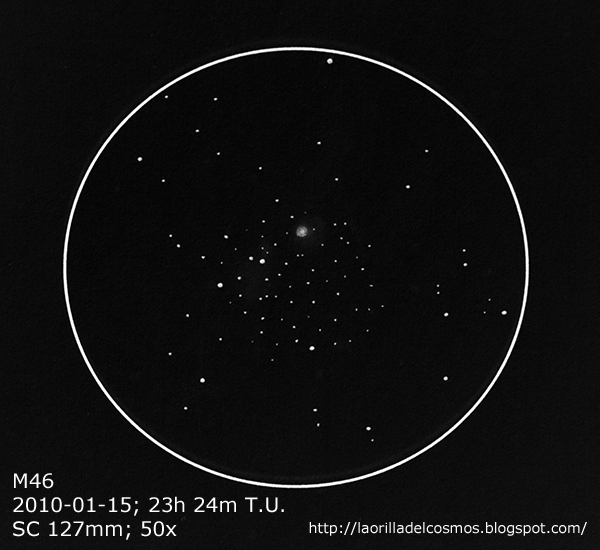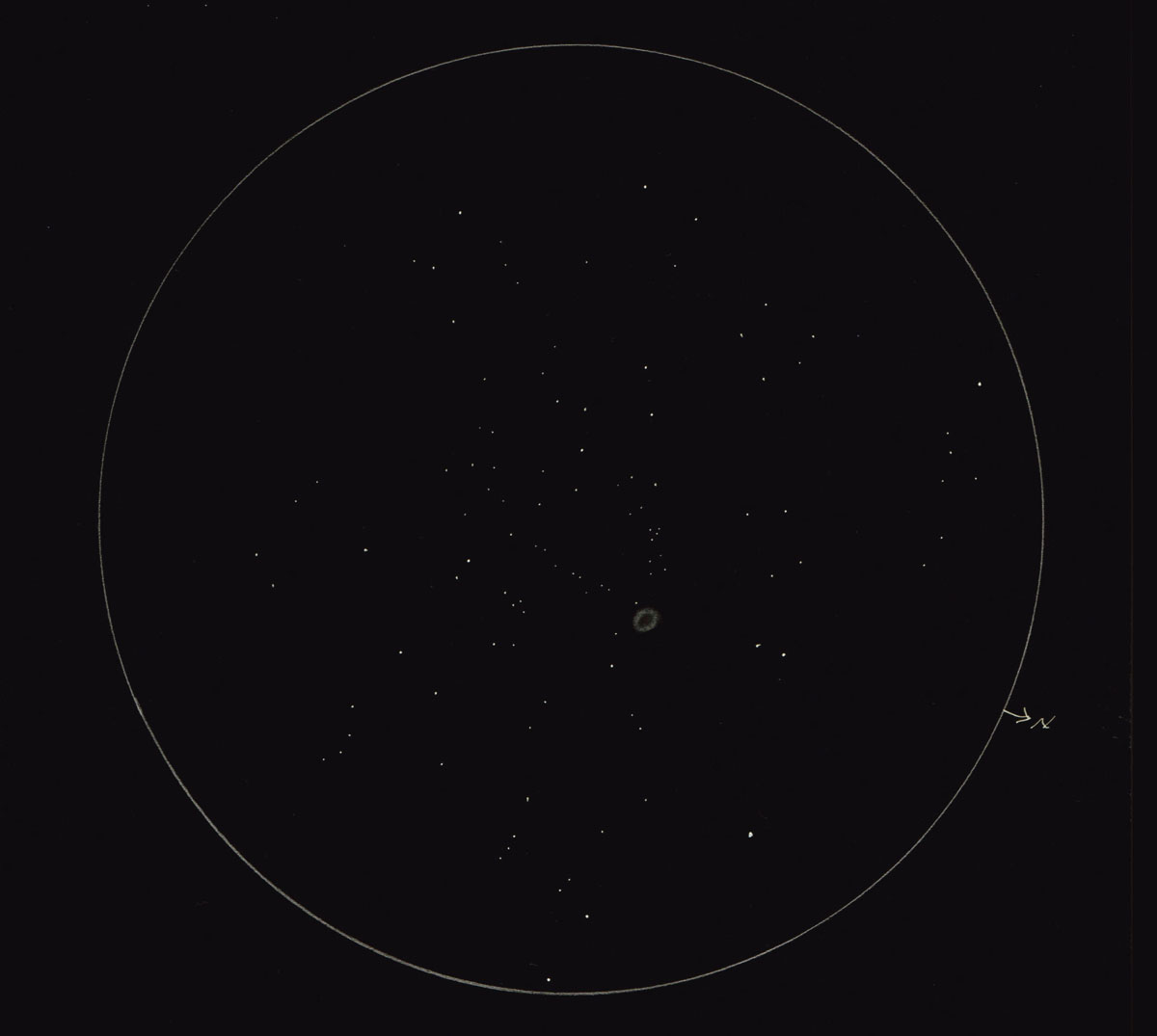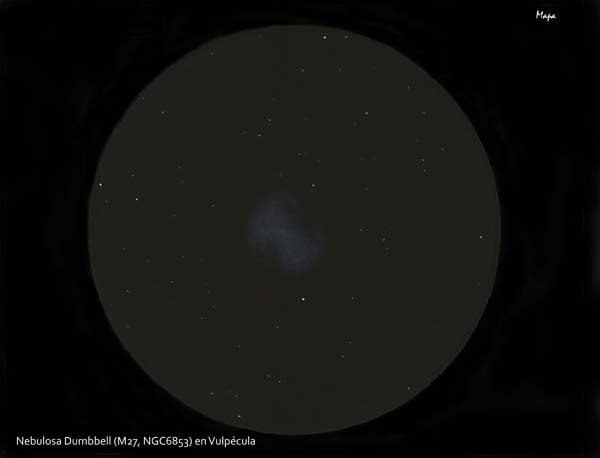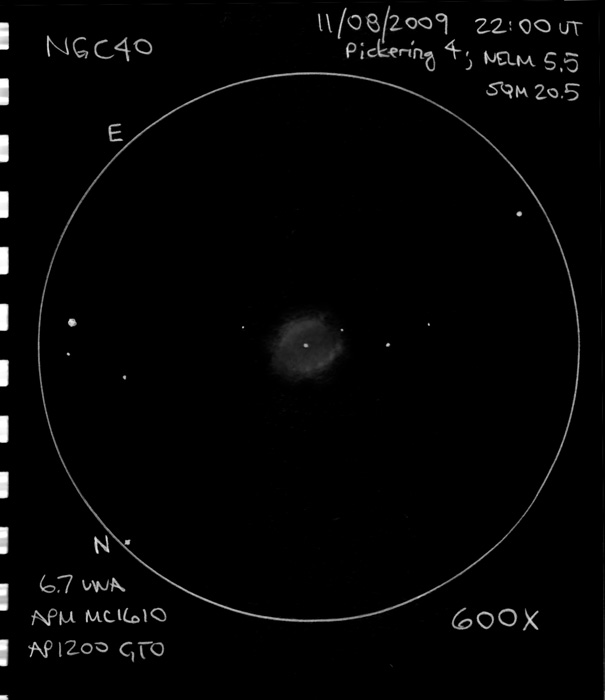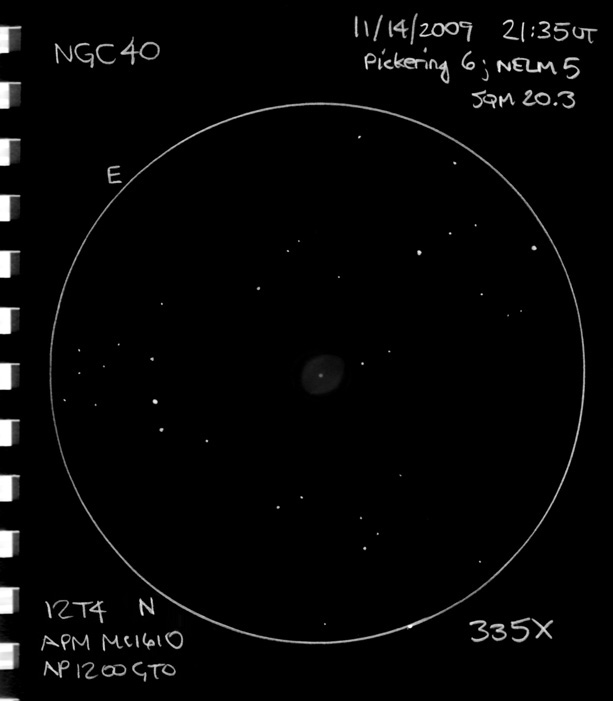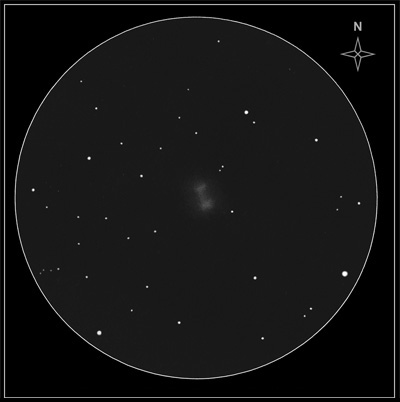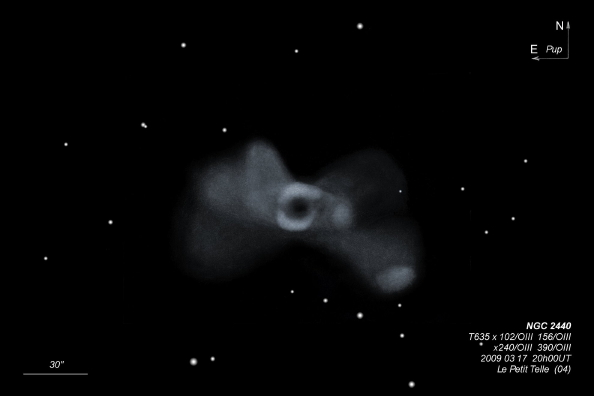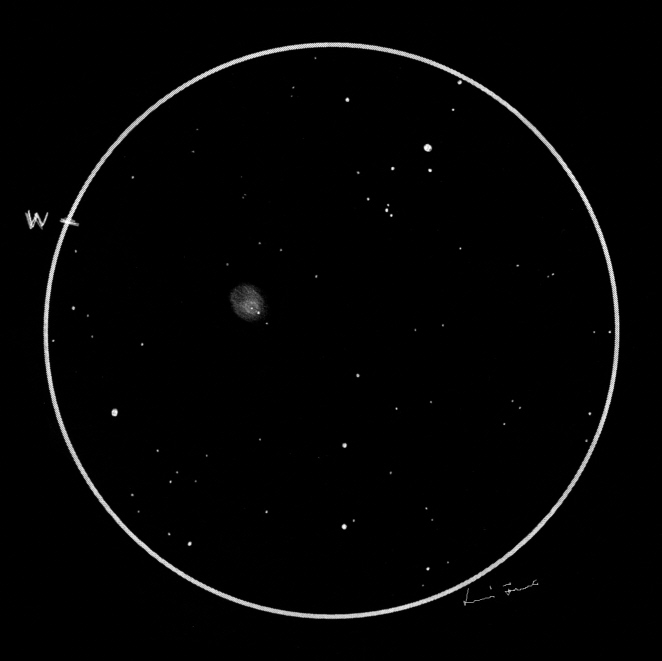
Messier 57
Sketch and Details by Tomás Ruiz Lara
I’m a lovely fan of the trilogy “The Lord of The Rings”, written by J.R.R. Tolkien. When I’m observing this nebula I always remember Gandalf and his pipe. This is a precious nebula, my favourite planetary nebula, easy to locate, easy to observe and lovely. This Sketch was done with a common pencil and with cotton to sketch the nebula and the stars was created with the program Gimp 2.6.7.
Equipment used, 260 mm newtonian reflector f/6 with a 21 mm eyepiece and a 2x Barlow (Barlow 2x Vixen Deluxe) (149x).
Seeing: 2/5
Phase of the Moon: Crescent but not visible.


